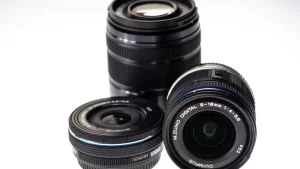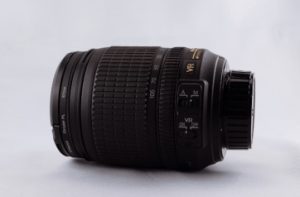
Important Things To Consider When Buying Camera Lens. Once you’ve gained confidence as a photographer, a new lens should be next on your shopping list. The kit lens, or default lens that comes with your camera, is usually an all-purpose lens for general use. However, if you want to achieve some creative effects or specialize on a specific genre of photography, you will need to invest in a high-quality lens.
Even if you have a basic camera, improving your lens can make a considerable difference in the quality of your images. You’ve come to the perfect place if you’re not sure where to begin. We’ll walk you through what to look for in your first lens.
Image Stabilization

When utilizing long lenses, you must use a fast shutter speed to eliminate camera shake. This is common sense based on the reciprocal rule. However, shooting at a fast shutter speed is not always possible. Some lenses include built-in image stabilization, which allows you to get a few of stops of extra light and shoot at a slower pace. Every manufacturer has a different name for this, but the core notion is the same. Nikon calls it Vibration Reduction (VR), Canon calls it Image Stabilization (IS), and Sony calls it Optical Steady Shot (OSS). Do you frequently photograph wildlife with your hands? Then, check for some lens stabilization. It will greatly simplify your life. If you use a mirrorless camera, your camera may include sensor stabilization, so you don’t have to worry as much about lens stabilization.
Compatibility With Your Camera
Crop sensor, full frame, micro four-thirds, and mirrorless cameras are examples of camera types. You must find the proper lens for your camera. Finding the right mount is critical; else, the lens will not fit your camera. A DSLR lens, for example, cannot be used on a mirrorless camera. To make them work together, you’ll need a specific adaptor. Even when purchasing lenses from the same manufacturer, you must use caution. Consider a lens designed for a crop sensor camera. On a full-frame camera, it will not perform as planned. Instead, you get photographs that have been cropped 1.5 times. A full-frame lens on a crop sensor camera will provide a larger focal length. These are not necessarily bad, and you may certainly utilize them creatively, but you must grasp what’s going on to use them properly.
Aperture
When you purchased your kit lens, you may not have paid attention to the aperture value. However, as you progress in your photography, you must consider the aperture before purchasing a lens. Lenses with larger apertures are generally more expensive due to their strong construction and higher performance. Choose lenses with an aperture of f4 or greater. This is useful for photographing in low light and achieving a great background blur. Zoom lenses are slower than prime lenses, but some zoom lenses have apertures as wide as f2.8. Unfortunately, these lenses can be quite hefty and expensive.
Another consideration, particularly when purchasing a zoom lens, is the kind of aperture (fixed or variable). It could be fixed or changeable. A fixed aperture lens, such as the 200-500mm f/5.6, can open to the widest aperture possible over the whole focal length range. A variable aperture lens, on the other hand, such as the 150-600mm f/5-6.3, varies its widest aperture for different focal lengths. Again, fixed aperture lenses are not cheap. However, if your budget allows, get a fixed-aperture lens. You will receive a strong lens capable of producing razor-sharp photographs.
Focal Length
After deciding on the sort of lens, consider the focal length or range you wish to cover. Look no further than the legendary nifty fifty—also known as the 50mm lens—for a versatile prime lens for travel, portraits, and still life. It is a low-cost prime lens that can improve the aesthetic of your images. There are numerous other reasons to purchase a 50mm lens. When it comes to zoom lenses, super zoom lenses like the 18-200mm or 24-120mm are fantastic places to start. This wide focal length
range allows you to photograph landscapes, portraits, and wildlife.
To get closer to their subjects, wildlife photographers should search for a focal length in the telephoto range, preferably greater than 200mm. Wide-angle lenses, such as 10-20mm or 14-24mm, are ideal for capturing sweeping countryside panoramas or stunning interior shots. There are also prime wide-angle and telephoto lenses available, such as 14mm f/1.8 and 500mm f/4.
Prime or Zoom?
The first thing you should consider is whether you want a prime or a zoom lens. A zoom lens may zoom to multiple focal lengths, whereas a prime lens has a fixed focal length. You can choose either based on your preferences, however a prime lens will allow you to push your creative bounds because you will be moving around a lot and improving your composition. Prime lenses are also faster because their apertures can open up to f/1.8 or f/1.4. This allows you to shoot in low-light situations. Prime lenses also provide a shallow depth of focus and silky bokeh. Furthermore, prime lenses create higher-quality photographs than zoom lenses. Zoom lenses feature additional elements to facilitate the moving mechanism, and thus are less sharp at either end of their focal length range.

